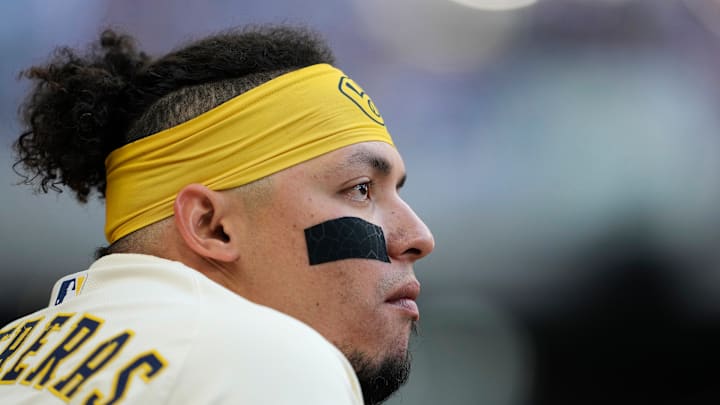Over the past few years, Major League Baseball has been testing and modifying an automatic strike zone (ABS) that includes a challenge system. The ABS system, which has been used in Triple-A full time since 2023, was tested out during MLB Spring Training this year, and now will be fully implemented during the 2026 regular and postseason.
Umpires will continue to call balls and strikes behind home plate, but pitchers, batters, or catchers can challenge a pitch by tapping their helmet. The ABS system then quickly reviews the pitch, displays a graphic for both in-stadium and TV audiences, and issues the correct call. Each team is allowed two challenges per game, with additional challenges granted in extra innings.
This change helps ensure greater accuracy, as the automated strike zone is tailored to each individual batter. While it's the same 17 inches wide as home plate, the zone extends 8.5 inches deep, measured from the front and back edges of the plate to its center. Vertically, the top of the zone is set at 53.5% of the player’s height, and the bottom at 27%, making it a personalized zone for every hitter.
With this system on the way, one aspect of the game that’s likely to see a decline in value is pitch framing, or the skill of presenting pitches to influence the umpire’s call. As a result, this could have a downstream effect on how teams evaluate catchers, shifting the focus away from framing ability and toward other traits that will carry more weight such as athleticism, arm strength, and blocking.
How will MLB's major rule change will affect Milwaukee Brewers catchers in 2026?
Barring an unexpected and dramatic move this offseason, William Contreras is expected to return as the Brewers’ primary catcher in 2026. Top prospect Jeferson Quero will likely factor into the equation as well. While a third catcher could be added to the mix, it’s not a given that it will be Danny Jansen, who is set to hit free agency.
Since joining Milwaukee, Contreras has been solid overall defensively, though pitch framing, a difficult skill to quantify, has been an area of fluctuation. While framing won’t be entirely eliminated under the new ABS/challenge system, as umpires will still call pitches, and teams are limited to two challenges per game, the emphasis on presentation will be reduced. Instead, Contreras’s biggest adjustment may be refining his setup by positioning himself at an optimal depth to receive pitches in a way that maximizes the chances of the ABS registering them as strikes.
One area of the game that could be further impacted by this catching strategy is the frequency of catcher’s interference calls. This has already been a growing trend league-wide, as some catchers have positioned themselves closer to the plate to improve pitch framing. Just last weekend, Contreras got called for catcher’s interference, was injured on the play, but thankfully avoided anything serious.
Now, with the ABS system coming, catchers may feel even more pressure to receive pitches within the system’s defined strike zone depth, potentially increasing the risk of contact with a batter’s swing and increasing the risk of injury.
There additionally may be a bigger focus on having athletic catchers with big arms behind the dish. Base stealing has been on the rise over the past few years, with bigger bases, limited pick-off attempts, and a pitch clock factoring in. Furthermore, blocking ability will become more relevant because, as mentioned, the art of pitch framing won't be as important.
This year, Contreras is grading out as two outs above average in terms of blocks above average. The league leader in this category, by a wide margin, is Alejandro Kirk at 20. Additionally, Contreras is throwing out 28% of base stealers, which is quite a bit less than the best this year as Luis Torrens, Austin Hedges, and Salvador Perez are each over 40%.
Given Contreras' offensive abilities and okay defensive metrics, a major change isn't going to occur in 2026, but in the future, the Brewers could prioritize signing and developing catchers differently, and more so to fit the mold of Quero, who is a great pitch framer but more importantly has a cannon for an arm.
While Quero is a strong pitch framer, his most standout tool is his arm. Before undergoing shoulder surgery, he was throwing out runners at an impressive 31–46% clip. As stolen bases become a larger part of the game and pitch framing becomes less critical under the ABS system, having a catcher who can control the running game may prove far more valuable than one who excels at stealing strikes.
